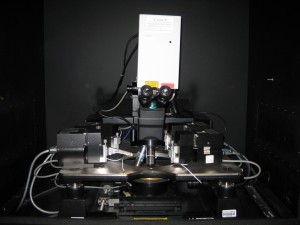In our very first lesson, we learned about visualization in art and science and how this helps us to “see the impossible.”

An example of a popular art medium, a gelatin silver print.
In art, different mediums may be used in order to convey a specific mood or to support the subject of the piece. Some of these mediums are gelatin silver print, oil on canvas, watercolor, murals, digital art, sculptures, and installations. Also, an artist may choose to work from “bottom to top” or “top down.” In the “bottom to top” technique, an artist gathers all of the materials he or she would need to create a piece. This is usually done with a clear vision in mind, although it can also be somewhat spontaneous. The artist uses these materials- splashes, applies, pieces- in order to finish the artwork. The “top down” method is slightly different. Instead of compiling the materials and using them to create a piece, the artist works with a large fixed piece and manipulates it using other small tools in order to create a finished product. For example, a sculptor who chooses to carve or chisel away at a stone is working from the top to the bottom. He is limited by the size of the piece he starts with, and he normally would not add any more materials (aside from those used for finish).

One would call this a useful scientific tool...
The visualization approach to science deals with microscopy and spectroscopy. The scientist uses tools in order to view a sample and obtain information. Some tools on the microscopy side are scanning & transmission electron, scanning tunneling microscopes &c.
I found today’s lectures and lab visits interesting primarily because I obtained much information about the relationship between art and science. I am becoming more and more convinced that the two have more in common than is perceived.
http://ezinearticles.com/?Art-Mediums-and-Means-Of-Expression&id=450569
http://science.jrank.org/pages/4310/Microscope.html
http://www.scienceofspectroscopy.info/
http://personal.cscs.ch/~mvalle/visualization/VizArt.html
http://www.scientificamerican.com/podcast/episode.cfm?id=7F935FF0-F32D-934E-3839395703713706

" Living in perfect harmony! "